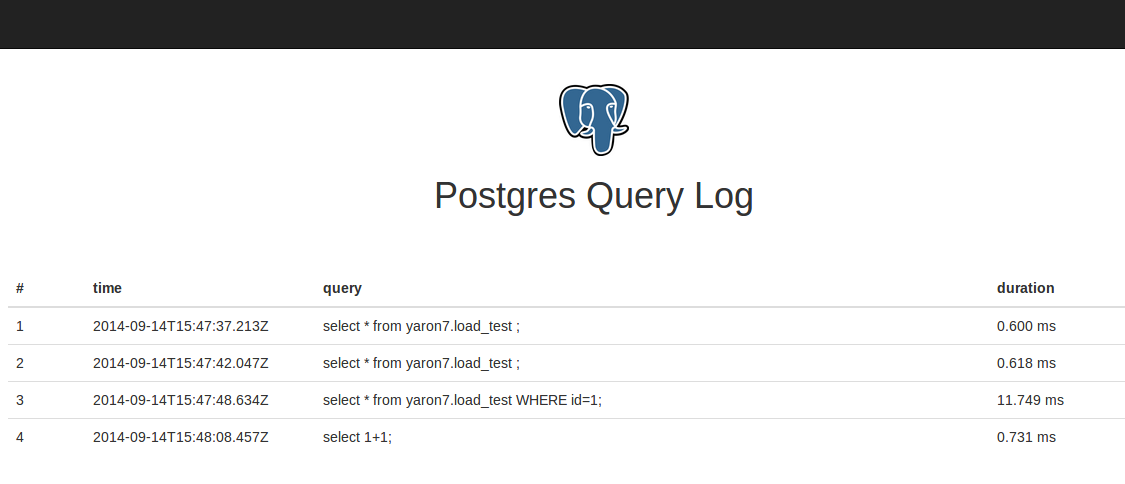Postgres query log inside your browser. Great to see how UI steps affect DB.
Created by Yaron Naveh (twitter).
npm install pg.log -g
(you can also install locally)
You need to configure Postgres to emit queries to log files.
Find your postgresql.conf. You can find its location by issuing the query "SHOW config_file;".
Find the following settings, uncomment them, and set them as follows:
logging_collector = on
...
log_statement = 'all'
Now restart postgres, issue some query, and see that it is written to the log. By default, logs will be written to PGDATA/pg_log. You can query for your PGDATA folder location with "show data_directory;".
You can find more information on configuring postgres logs here and here.
Run:
$> pg.log -p 3000 -d /var/lib/postgresql/9.3/main/pg_log/
-p is an arbitrary port you want pg.log to run on
-d is the postgres logs directory (PGDATA/pg_log if you have not changed it.
Defaults are in the sample above.
Note: pg.log needs access to the postgres log folder or you will get a "permision denied" error. You should grant required permissions or use sudo (though less recomemnded in general).
Surf to http://localhost:3000/ and once new queries arrive you will see them in the browser.
